Abstract
1 The plasma availability of prednisolone after oral doses of prednisolone and its precursor, prednisone, were compared in ten normal controls and twenty-five patients with chronic active hepatitis by estimation of the area under the plasma concentration--time curve for the drug (AUC). 2 In controls, values for AUC were significantly more variable after prednisone than prednisolone, and two subjects showed markedly inefficient conversion of prednisone to prednisolone. In patients, variability was similarly wide after both preparations, but overall bioavailability after both prednisone and prednisolone was similar to that found in controls, although three patients showed subnormal values after both preparations, possibly as a result of impaired intestinal absorption. 3 Patients with biochemical and histological evidence of active hepatocellular necrosis showed evidence of impaired activation of prednisone, but this was compensated for by a decreased rate of elimination of prednisolone from the plasma. 4 It is concluded that plasma prednisolone levels will be more predictable after prednisolone than after prednisone in subjects without hepatic dysfunction. In the presence of liver disease, because of the marked variability in plasma prednisolone levels after either drug, estimation of these could be of value in those patients whose disease cannot be controlled by normal maintenance doses.
Full text
PDF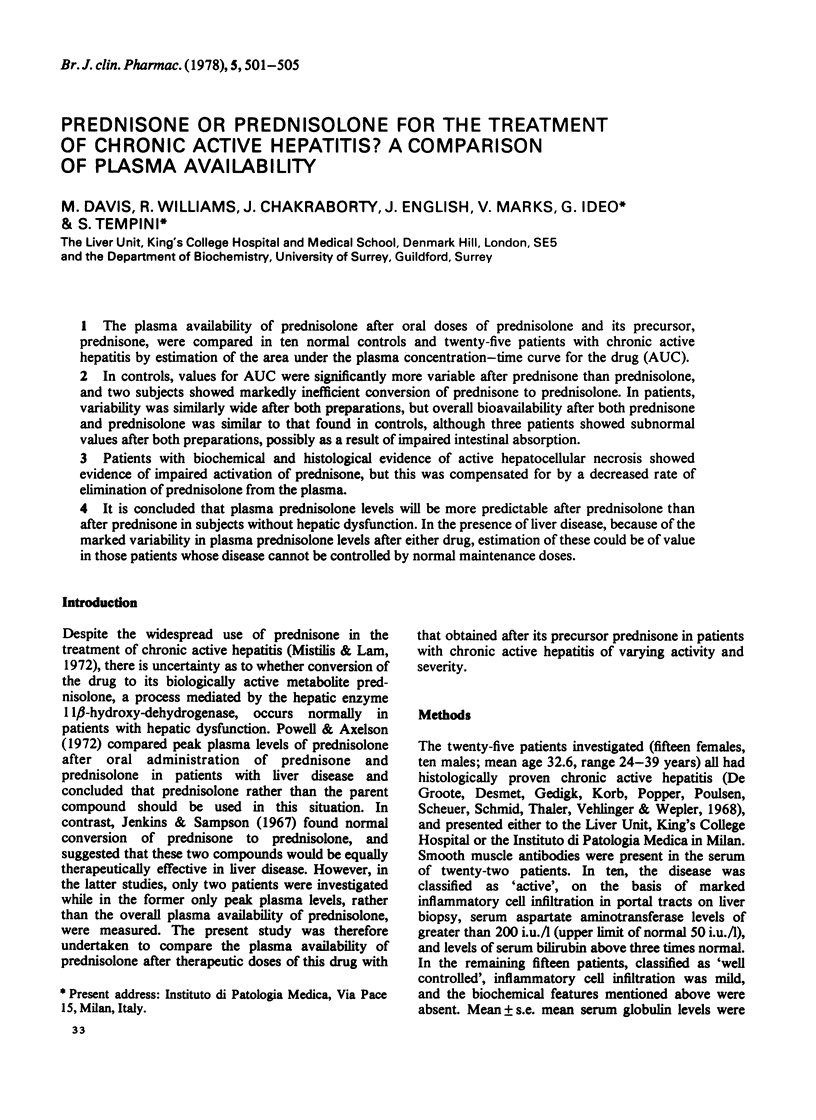
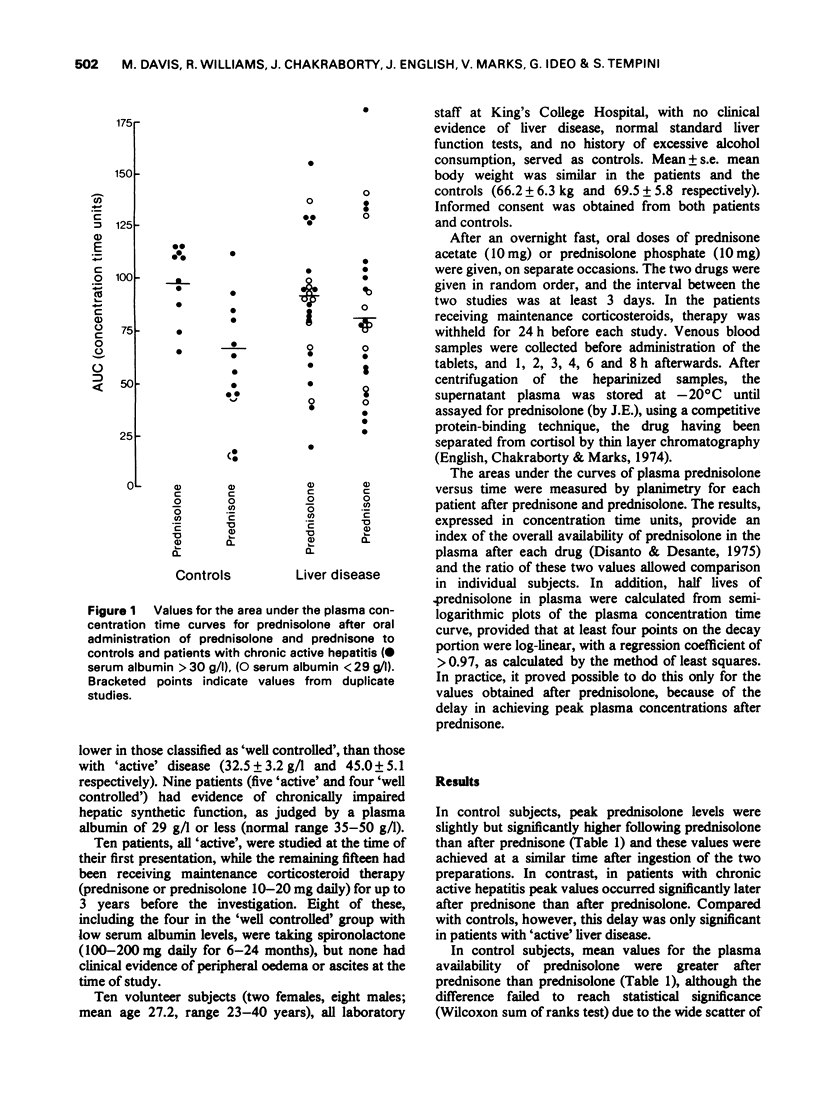
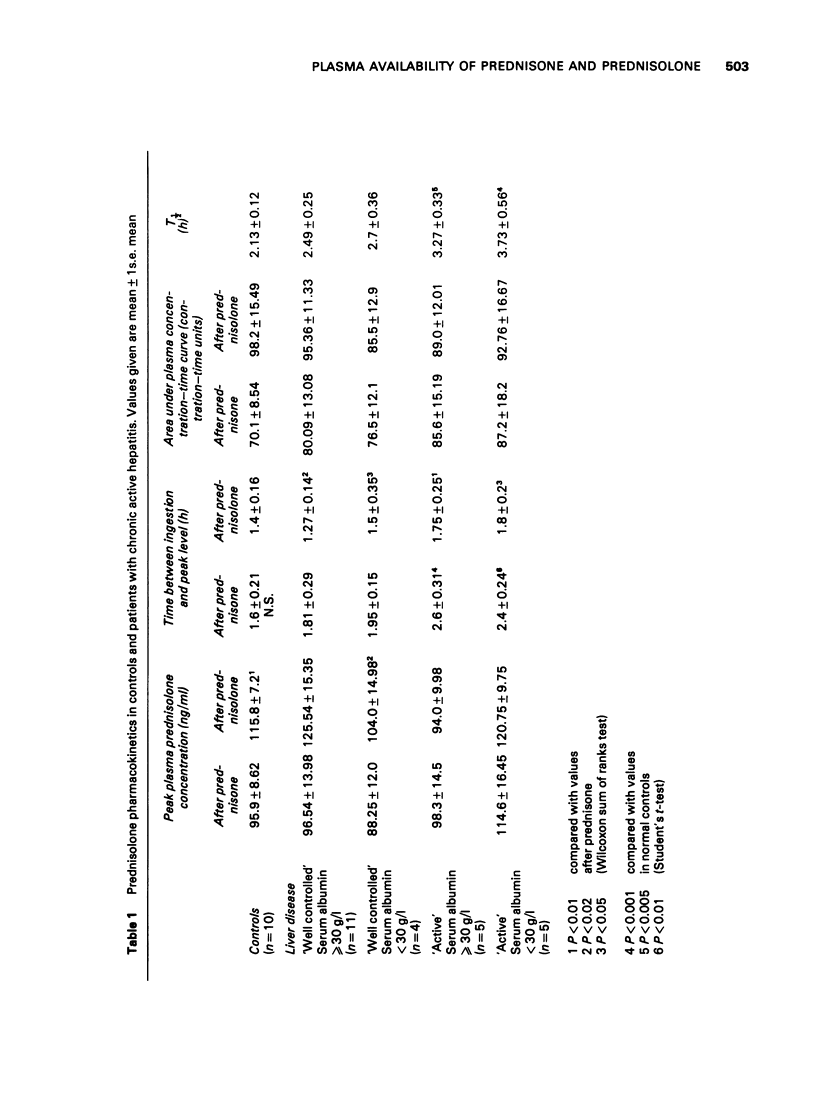
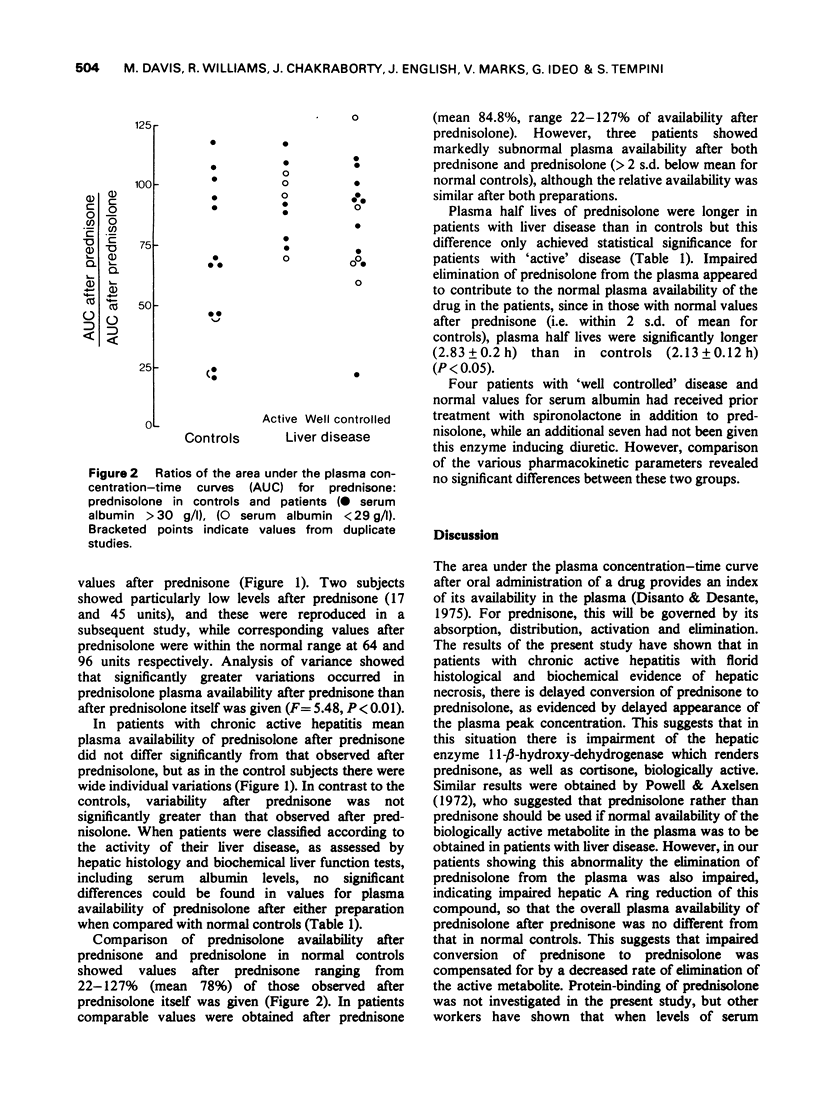
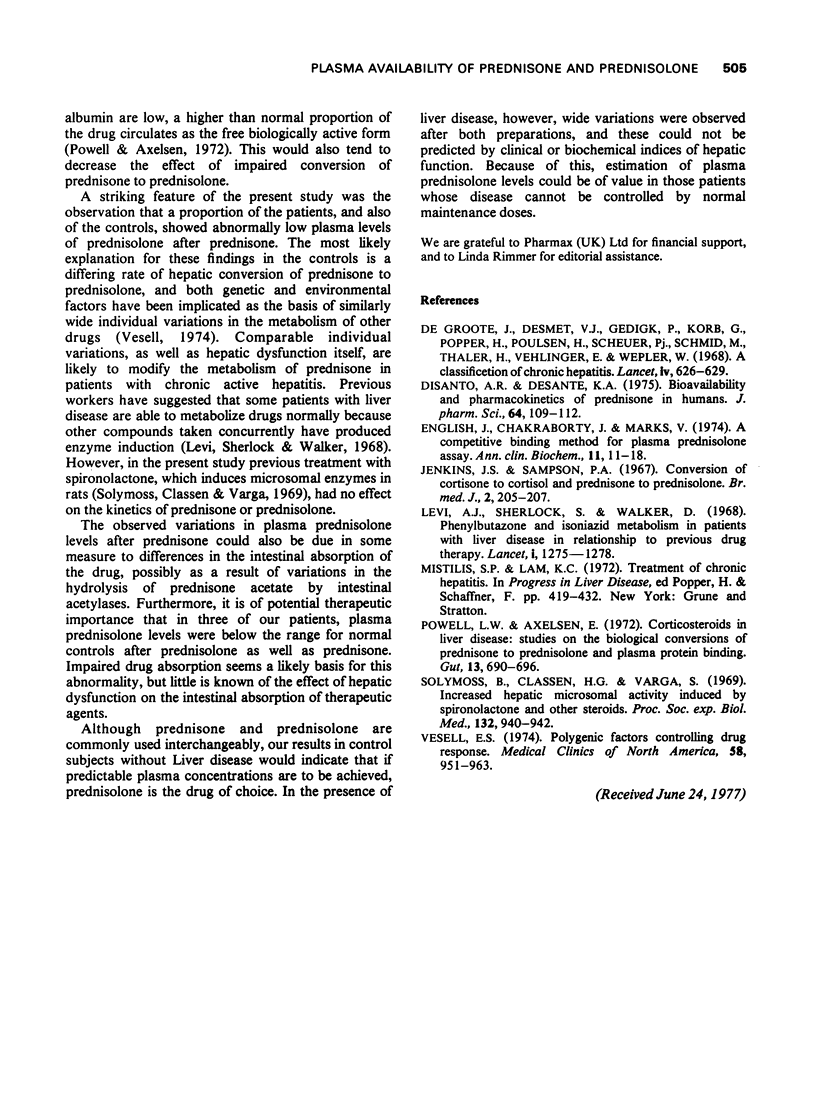
Selected References
These references are in PubMed. This may not be the complete list of references from this article.
- De Groote J., Desmet V. J., Gedigk P., Korb G., Popper H., Poulsen H., Scheuer P. J., Schmid M., Thaler H., Uehlinger E. A classification of chronic hepatitis. Lancet. 1968 Sep 14;2(7568):626–628. doi: 10.1016/s0140-6736(68)90710-1. [DOI] [PubMed] [Google Scholar]
- Disanto A. R., Desante K. A. Bioavailability and pharmacokinetics of prednisone in humans. J Pharm Sci. 1975 Jan;64(1):109–112. doi: 10.1002/jps.2600640122. [DOI] [PubMed] [Google Scholar]
- Jenkins J. S., Sampson P. A. Conversion of cortisone to cortisol and prednisone to prednisolone. Br Med J. 1967 Apr 22;2(5546):205–207. doi: 10.1136/bmj.2.5546.205. [DOI] [PMC free article] [PubMed] [Google Scholar]
- Levi A. J., Sherlock S., Walker D. Phenylbutazone and isoniazid metabolism in patients with liver disease in relation to previous drug therapy. Lancet. 1968 Jun 15;1(7555):1275–1279. doi: 10.1016/s0140-6736(68)92292-7. [DOI] [PubMed] [Google Scholar]
- Mistilis S. P., Lam K. C. Treatment of chronic hepatitis. Prog Liver Dis. 1972;4:419–432. [PubMed] [Google Scholar]
- Powell L. W., Axelsen E. Corticosteroids in liver disease: studies on the biological conversion of prednisone to prednisolone and plasma protein binding. Gut. 1972 Sep;13(9):690–696. doi: 10.1136/gut.13.9.690. [DOI] [PMC free article] [PubMed] [Google Scholar]
- Solymoss B., Classen H. G., Varga S. Increased hepatic microsomal activity induced by spironolactone and other steroids. Proc Soc Exp Biol Med. 1969 Dec;132(3):940–942. doi: 10.3181/00379727-132-34342. [DOI] [PubMed] [Google Scholar]
- Vesell E. S. Polygenic factors controlling drug response. Med Clin North Am. 1974 Sep;58(5):951–963. doi: 10.1016/s0025-7125(16)32092-2. [DOI] [PubMed] [Google Scholar]


